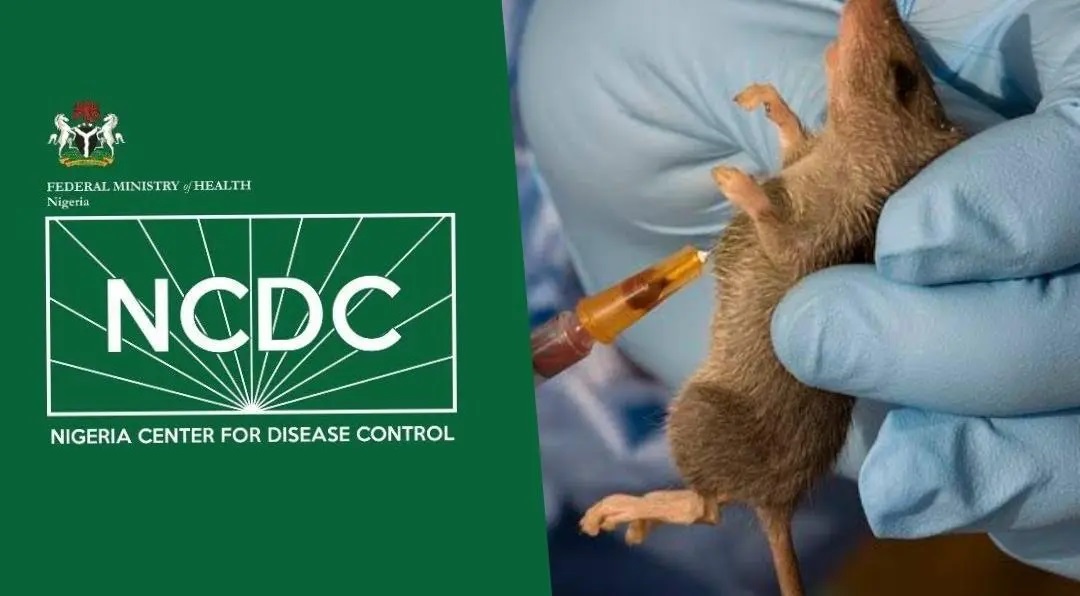The Nigeria Centre for Disease Control and Prevention (NCDC) has confirmed 152 deaths from Lassa fever within the first 28 weeks of 2025, reflecting a higher case fatality rate (CFR) of 18.7%, compared to 17.3% recorded during the same period in 2024.
According to the agency’s latest situation report published on Monday via its official website, 811 confirmed cases and over 6,520 suspected infections have been documented across 21 states and 105 local government areas.
States with the highest burden include Ondo, Bauchi, Edo, Taraba, and Ebonyi.
“We are witnessing a slight decline in the total number of confirmed cases compared to 2024, but the fatality rate has increased,” the report noted, attributing the trend to late presentation of cases, poor health-seeking behaviour, and limited access to early treatment.
In epidemiological week 28 alone, the NCDC recorded 11 new confirmed cases and one death, with infections reported from Ondo, Edo, and Benue states. No healthcare workers were infected during the week.
The agency noted that individuals aged 21–30 years remain the most affected demographic, with an almost equal distribution between male and female patients.
Response and Interventions Intensified
To address the outbreak, the NCDC and its partners have launched multiple interventions in high-burden areas:
Deployment of 10 National Rapid Response Teams using a One Health approach.
Commencement of INTEGRATE Clinical Trials in Ondo State to improve case management.
Targeted training for healthcare workers in Bauchi, Ebonyi, and Benue states.
Additionally, community sensitisation and environmental hygiene campaigns are underway in partnership with Nigeria Health Watch, WHO, Pro-Health International, IHVN, and other stakeholders.
The NCDC has also launched a new Infection Prevention and Control (IPC) e-learning platform supported by the Global Fund. IPC supplies, including Ribavirin, PPEs, and disinfectants, have been distributed to states and treatment centres.
Persistent Challenges Remain
Despite increased efforts, the NCDC cited several persistent obstacles that continue to fuel the disease’s impact:
Late presentation of cases, which worsens outcomes and increases fatalities.
Poor sanitation in affected communities, which limits disease control efforts.
Low awareness in vulnerable areas and high treatment costs, which discourage early medical attention.
The agency stressed that community engagement, early detection, and prompt treatment are critical to curbing the spread and reducing mortality.
“The public is urged to avoid contact with rodents, maintain proper hygiene, and seek immediate medical care at designated treatment centres when symptoms such as fever, headache, or bleeding occur,” the NCDC said.
Citizens are encouraged to follow public health advisories and call the NCDC toll-free line: 6232 for assistance and inquiries.
About Lassa Fever
Lassa fever is a viral hemorrhagic illness primarily transmitted through contact with the urine or faeces of infected rats. It can also spread between humans via bodily fluids, contaminated surfaces, or infected medical equipment.
Common symptoms include fever, sore throat, vomiting, headache, and muscle pain. In severe cases, patients may experience bleeding from body openings, leading to life-threatening complications.
The News Agency of Nigeria (NAN) reports that the NCDC continues to monitor the situation and urges all Nigerians to remain vigilant as containment efforts intensify nationwide.





